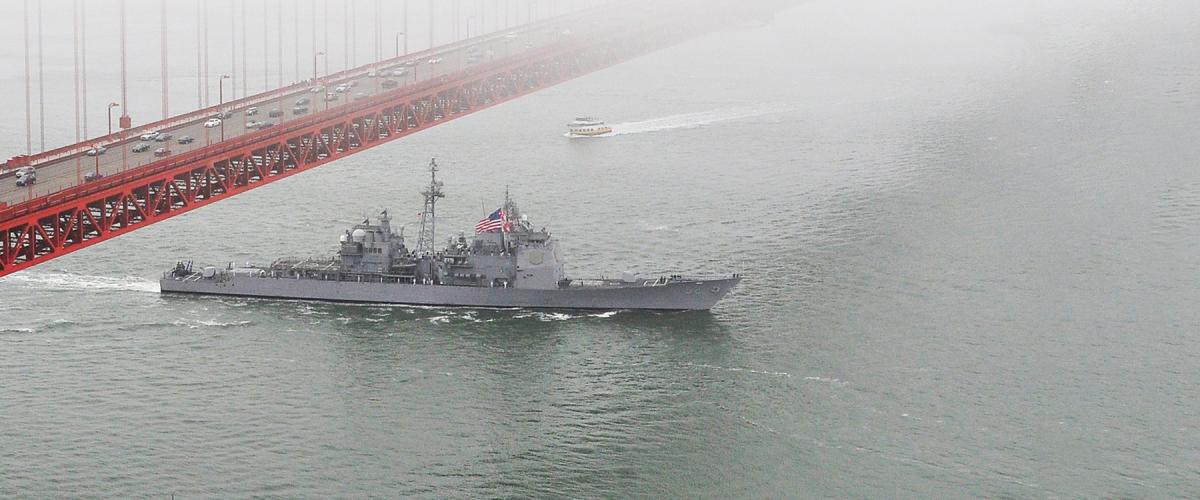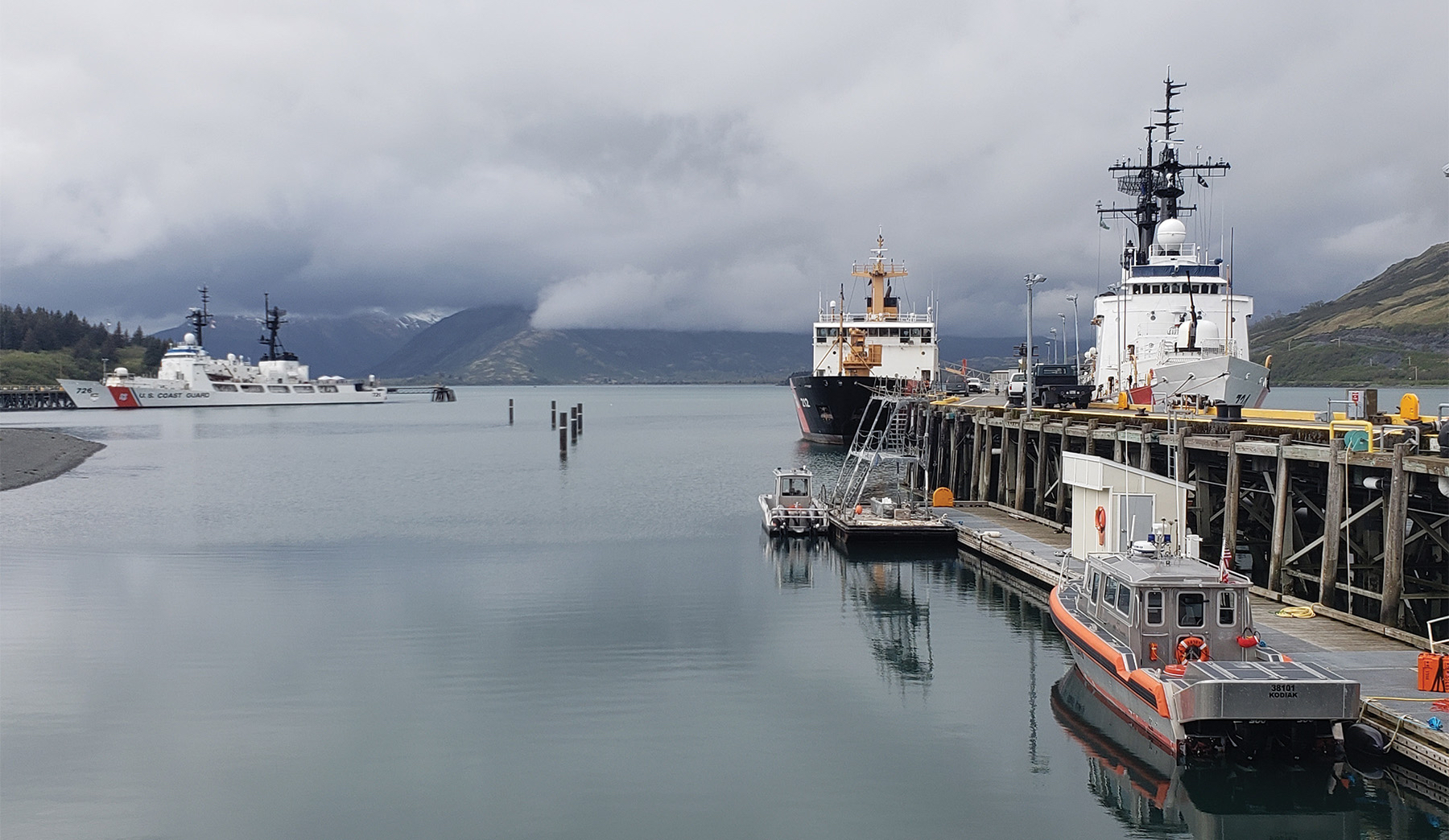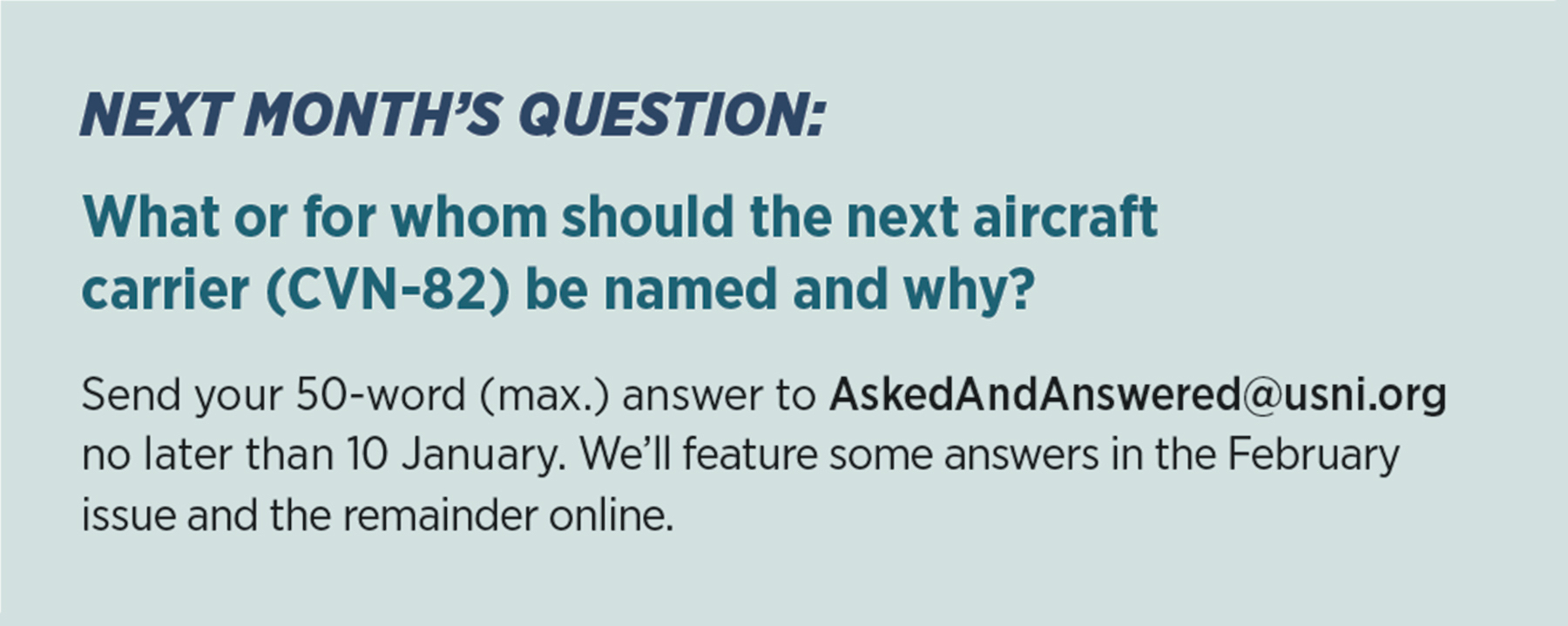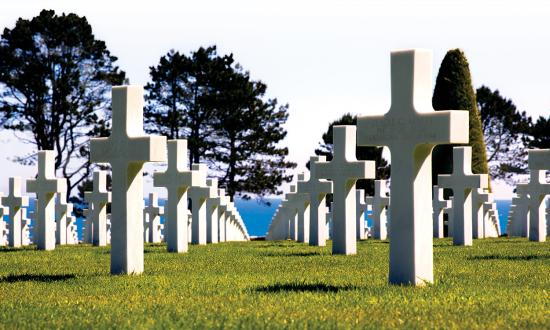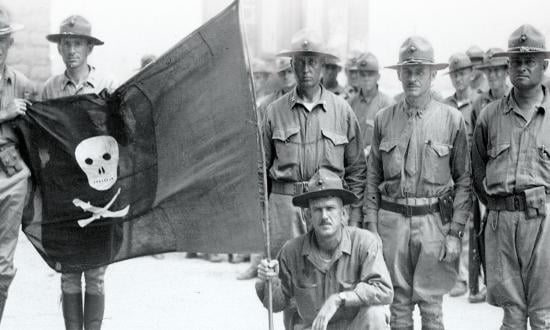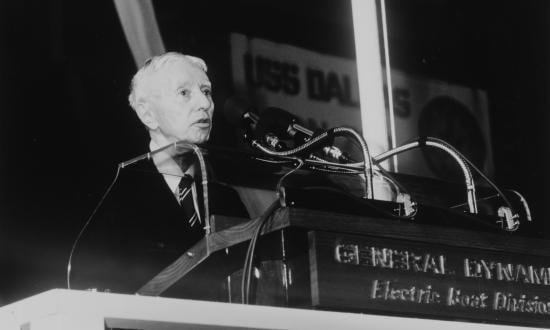Rear Admiral Ben Wachendorf, U.S. Navy (Retired)
I sailed the USS Parche (SSN-683) under the Golden Gate Bridge 104 times. Four of the first seven times, I could not see the bridge directly overhead because of dense fog. This was before GPS. There is a natural nozzle where the bridge was built that creates strong tidal eddy currents. One time I had to crab 47 degrees off course at a full bell to maintain track.
Lieutenant Commander Steve Cox, U.S. Navy (Retired)
When I was officer of the deck on board a submarine rescue ship in the early 1990s, we lost propulsion while snaking our way up the Cooper River in Charleston, South Carolina, using range markers. Drifting toward shoal water, we were seconds from dropping the hook in the middle of the river when we got power back.
Rear Admiral Ray Cowden Witter, U.S. Navy (Retired)
Leaving Naval Station Subic Bay, Republic of the Philippines, at night after a few hours of liberty. My ship had been at sea off Vietnam for more than 60 days. The commanding officer (CO) granted liberty to everyone except for my duty section until 2200. Many crew members returned drunk. The CO was asleep in his bridge chair, the executive officer in his stateroom. Getting underway in sea state four with a howling wind was quite a challenge.
Captain Donald E. Pauly, U.S. Navy (Retired)
In 1958, when I was a lieutenant in command of the USS Dash (AM-428), we went up the James River to Richmond, Virginia, to be open to visitors. The channel was 150 feet wide and the ship 165 feet long—extremely demanding, especially without a pilot. I believe no other Navy ship had done that sea detail since the Civil War.
Rear Admiral Fred L. Ames, U.S. Coast Guard (Retired)
On board the USCGC Morgenthau (WHEC-722) during Operation Brim Frost, Alaska, 1989. Returning to Base Kodiak, the air temperature was minus 14 degrees Fahrenheit, there was thick sea smoke, darkness, and 12 inches of ice in the harbor. We could only use radar navigation, and the deck crew had to be rotated every ten minutes. We did not see the pier until 100 yards out.
U.S. Coast Guard Base, Kodiak, Alaska. U.S. Coast Guard (Lauren Dean)
Steven Palmer, Master Mariner Unlimited Tonnage
In November 2016, I was relief master on board the APL Singapore. We had a 10.5-hour (normally 5) Yangtze River transit to the dock because of high winds. The bow thruster was not available because of an automation issue. We needed several stop-and-dead-slow-ahead bells to keep control of the vessel while minimizing headway.
Commander Lawrence Chicchelly Jr., U.S. Navy Reserve (Retired)
Nestled warm in the rack as a 20-year-old deck cadet, I was called to help drop anchor with no notice (and thin khakis) in the dead of night and a blinding snowstorm on Rio de la Plata, Argentina. Afterward, with no cocoa available, I drank my first coffee—black! That anchor detail inspired my lifelong pursuit for the best java and a career at sea!
Captain John E. O'Neil, Jr., U.S. Navy
I was commanding the USS Harlan County (LST-1196) making a port call in Matadi, Zaire, up the fast-moving Congo River. Approaching the dock, the officer of the deck called “no bollard for line 3!” The pilot said, “captain, you got the conn!” We drove up, docking on full bell orders, avoiding the Chinese ship ahead.
Commander Gregory Atchison, U.S. Navy (Retired)
Anchoring in the channel, I had the conn going into Port Mahon, Delaware, when the pilot directed us to drop the second anchor. I pointed out to the commanding officer that if the ship were to swing, we would tangle the anchors. But what does an ensign know? A thunderstorm arose that night, the anchor chains wrapped multiple times, and I spent the next morning in a boat working with the deck gang on the forecastle trying to untangle the anchors, to no avail. We left one anchor on the bottom, where I expect it remains to this day.
Captain John J. Paulson, U.S. Navy (Retired)
In pea-soup nighttime fog at full-speed entering the Chesapeake Bay for a tug rendezvous at Little Creek, we turned and slowed while rigging a ladder for a stretchered sailor with life-threatening bleeding. Using a newfangled cellphone, the doctor coordinated care with a waiting ambulance crew throughout, saving the patient, who coded twice en route.
Ethan Harris, U.S. Navy Veteran
As a quartermaster, I was helmsman at all special sea-and-anchor evolutions. The most challenging, and professionally satisfying, was steering alongside a larger vessel while underway. Regardless of compass course I held my ship alongside at 50 feet.
Chief Petty Officer Allen Worth, U.S. Navy (Retired)
The passage through the Strait of Malacca. It was not necessarily grueling, just long. I seem to recall it took about five hours to transit, all the while at sea & anchor detail, with extra lookouts, and damage control lockers manned as well. One passage was particularly strenuous because of a series of squalls and high winds in the area at the time.
Commander Richard Hobbs, U.S. Navy Reserve (Retired)
On board the USS Shangri-La (CVS-38) as assistant navigator in fall 1970 when the ship had to return a day late into Mayport, Florida, with 1,000 dependents embarked for a dependents day cruise because of lingering heavy fog. During the ensuing three-hour ordeal late that next afternoon, we had to feel our way a mile down the St John’s River entrance to the mooring basin in gathering darkness in dense fog while keeping the ship aligned with the channel by repeatedly dropping anchor like a yoyo and being prodded by several tugboats. We finally made it unscathed back to the dock, much to the relief of the crew and our stressed-out visitors, who had been expecting only a short time underway the day before. The incident made the national news later that evening.
Captain Rich Sloane, U.S. Navy (Retired), Golden Life Member
Refresher Training at Guantanamo Bay, Cuba. The bridge windows are papered over and you go forth with guts, glory, and faith in the combat information center.
Captain Ray Brown, U.S. Coast Guard (Retired)
I was an ensign and the shipping officer in the combat information center. We proceeded into New York Harbor at standard speed in heavy fog. I had to track 56 contacts, none visible. I had some difficult moorings in my career, but nothing like that approach to Governor Island.
Chief Petty Officer John M. Duffy, U.S. Navy (Retired)
The Strait of Hormuz! With its established traffic lanes, numerous oil wells, small islands, shallow waters, and extremely high shipping density, it was a challenge, especially at night. On board the USS Reeves (CG-24), we transited the strait six times in 1993, each time enduring radio challenges from both the Iranians and Omanis. I was the ship’s piloting officer for all six sea details and acquired a healthy respect for those waters.



